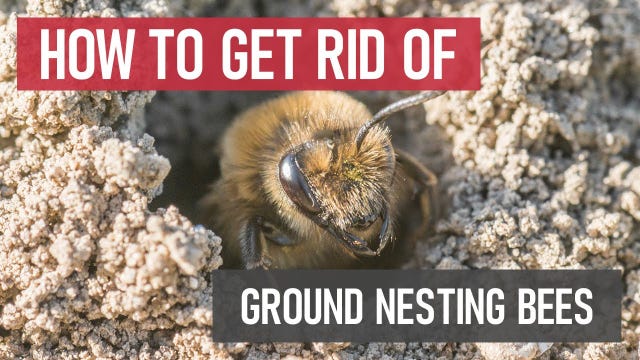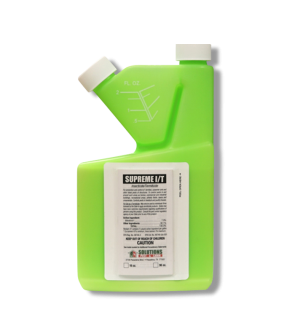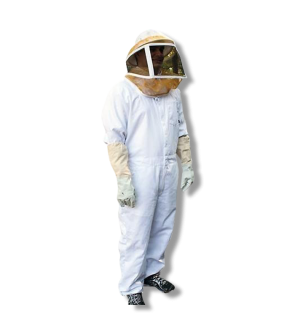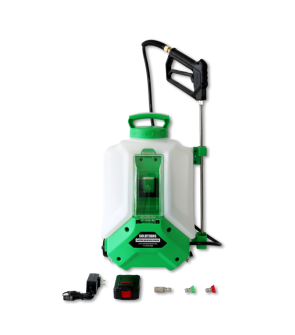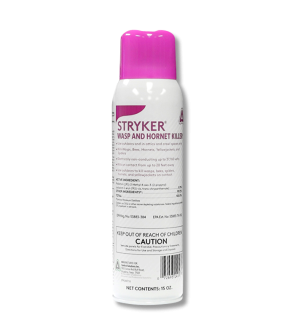Gain access to personalized product screening, the best pricing, rewards, and more!
Most Effective Products
Ground Nesting Bee Control: How to Get Rid of Ground Nesting Bees
This page is a general ground nesting bee control guide. Using the suggested products and methods will help you completely control ground nesting bees on your property. Follow this DIY guide and use the recommended products, and we guarantee 100% control of ground nesting bees.
When we think of bees, most individuals think of honey-producing ones like honey bees in trees, but there are bees that live underground. These are ground nesting bees, an often overlooked bee that doesn't create honey and creates a series of tunnels in the ground.
Ground bees are a broad group that includes many species of solitary bees that burrow into the soil to nest. While people often use ground bees as a catch-all term, it actually includes species like mining bees, cellophane bees, sweat bees, metallic green sweat bees, digger bees, long-horned bees, and mallow bees. These bees are mostly non-aggressive yet have the ability to sting if provoked, especially if homeowners mow directly over their nests. Still, when they nest in high-traffic yards or near homes, they can become a nuisance.
One ground nesting bee might not be a problem, but they often do not come alone as other ground-nesting bees will create nests near existing tunnels. When they invade your property, they can make outdoor time stressful and even pose a danger to pets or people with allergies. Fortunately, there are ways to handle and prevent ground nesting bee infestations with the following tips and products in this DIY guide.
Identification
Before proceeding with treatment, you must ensure the pest infesting your yard is a ground nesting bee. Misidentification can lead you to use the wrong products and treatment approach, costing you time and money. Ground nesting bees can vary in appearance depending on the species, but most of them share some general traits. Here's what they typically look like:

- Ground nesting bees are small in size, ranging between 1/2 to 3/4 inch long. Their appearance can vary by species, but most have slender bodies. Depending on the species, they can come in a variety of colors such as black, blue, green, copper, or metallic reddish-brown.
- These bees have two pairs of transparent wings with visible veins. Their wings are delicate and often folded flat over their backs when the bee is at rest.
- Male ground-nesting bees are usually distinguished by their longer antennae and the absence of a stinger. In most ground-nesting or solitary bee species, only the females possess a stinger.
- Another bee that lives in the ground is the bumblebee. However, unlike ground nesting bees this bee creates honey and is recognized more as benefical insects. A bumblebee has a softer appearance with hair covering its head, thorax, and abdomen. While bumblebees also grow up to 3/4 of an inch in length, they’re body colors can include yellow, black, white, red, and orange.
Use the image and description above to help you know what ground nesting bee look like for proper identification. If unsure, contact us by phone, with a photo of your pest through email, or visit one of our store locations where one of our team members can assist with identification and suggest the appropriate treatment plan.
Inspection
Once ground nesting bees have been confirmed in your yard, you can proceed with the inspection. During this process, you will determine where ground nesting bees are found on your property and the conditions allowing them to thrive. By learning this information, you can determine where to focus your pesticide applications, helping to increase ground nesting bee control.

Where to Inspect
Ground nesting bees prefer bare, well-drained, sandy, sparse grass, or loose soil because it’s easier for them to burrow underground. They will also burrow into existing small holes that are about 1/4 inch in diameter, creating underground tunnels where they lay their eggs and raise their young.
Common places you can expect to find ground nesting bees are lawns, garden beds, riverbanks, dunes, trails, open fields, meadows, roadside shoulders, and in sheltered areas such as cavities in dead wood, hollow plant stems, or even cracks in concrete or stone.
What to Look For
You can often spot ground nesting bees by looking for small, round holes in the soil, usually about 1/4 inch in diameter, surrounded by tiny mounds or loose dirt where they’ve dug their tunnels.
Also look for the bees themselves. These pests typically fly close to the ground as they enter and exit their burrows.
Though these pests are solitary, they will create nest clusters where multiple individual nests are located close together in the same area. Each bee usually digs and maintains its own separate burrow.
Treatment
When dealing with stinging pests like ground nesting bees, it's important to wear proper personal protective equipment (PPE) or a professional bee suit for full protection against stings.
The best time to treat is late evening or early morning when ground nesting bees are less active and more likely to be inside their nests.
The most effective approach is starting with Supreme IT to set up long-lasting protection in your yard, then following up with Stryker Wasp & Hornet Killer to wipe out any active pests on the spot.
Step 1: Apply Supreme IT

Ground nesting bees that attempt to re-enter the nest or new bees that come along looking for a spot to burrow will come into contact with the treated area and be eliminated.
Determine how much Supreme IT to use by measuring the square footage of the treatment area. Find the square footage by measuring the treatment area's length and width in feet, then multiplying them together (length X width = square footage).
This product will need to be mixed with water in a handheld pump sprayer or backpack sprayer.
For ornamentals, apply 0.25 to 0.5 fl. oz. of Supreme IT per 1 gallon of water per 1,000 sq. ft.
Spray the top and bottom of leaves until wet, but not to the point of runoff. Next, focus the application on nest entrances, shaded soil patches, mulch, groundcover areas, and along the base of shrubs and trees where these pests are likely to burrow.
After treating the ornamentals, the next step is to spray your lawn to address any additional ground nesting bee activity.
A general application will use 1 fl. oz. of product per 1 gallon of water per 1,000 sq. ft.
Apply evenly across the lawn, with extra attention to bare or patchy spots where bees prefer to burrow.
Direct the spray at nest openings in the ground, around bushes, and into cracks and crevices where the insects may be nesting. Make sure to saturate the openings thoroughly, ensuring that the spray contacts as many bees as possible inside the nest.
Keep people and pets out of the treated area until the spray has dried.
Step 2: Directly Spray Ground Nesting Bees

Stryker Wasp and Hornet Killer is an excellent contact-killer wasp spray that controls stinging pests instantly upon spraying and offers safe control for applicators due to its spraying distance of 20 feet. Its rapid knockdown capability, electrical safety, and ease of use make it a valuable tool for homeowners dealing with stinging pests.
When using Stryker Wasp and Hornet Killer, first locate the nest and prepare the can.
Align the nozzle valve opening directly opposite the mark on the valve cup.
Press down on the actuator and apply the spray using a sweeping motion to contact any bees that are stirred up or flying near the nest entrance.
From about 6 to 15 feet away, drench any burrows you have spotted.
Once the area is clear, move directly to the nest opening and spray into the hole for 6 to 8 seconds, ensuring the foam penetrates the nest to eliminate insects inside.
This product is for use outdoors and in attics and crawl spaces only.
Prevention
When ground nesting bees are no longer on your property, you must follow some preventative practices to ensure they do not return. Listed below are recommended practices to follow to ensure ground nesting bees do not return to your property:
- Preventing ground nesting bees is all about making your yard less attractive to them while encouraging healthy turf and landscaping. Start by maintaining a thick, healthy lawn, as these pests prefer bare or thin patches of soil to dig their burrows. Fertilization with a slow-release granular fertilizer will do well to promote dense, healthy foliage. The denser the vegetation the less likely it is for these pests to create nests. Regular watering helps keep soil moist, which discourages bees that prefer dry, loose dirt. We recommend watering with an inch of irrigation once per week. Best to do so early in the morning to give enought time for the water to absorb. Covering exposed soil in landscapes with groundcover, landscape fabric, rocks, or dense vegetation will also reduce nesting opportunities.
- Eliminate bare patches in your yard by reseeding with grass seed that matches your existing lawn.
- To avoid adults from creating nests in abandoned nests, we recommend tilling the soil to destroy the tunnels.
- Lastly, to prevent ground nesting bees from reappearing continue to reapply Supreme IT to your ornamentals and lawn every 90 days. So, make treatments every 3 months for year-round control. Be sure to treat any new burrows as they appear in your yard.
Key Takeaways
What are Ground Nesting Bees?
- Ground nesting bees are solitary or social bees that dig nests in bare or well-drained soil, often creating small holes in lawns, gardens, or sandy areas.
How to Get Rid of Ground Nesting Bees
- To get rid of ground nesting bees, you will need to use Supreme IT and Stryker Wasp and Hornet Killer.
Preventing Ground Nesting Bees Reinfestation
- Preventing ground nesting bees involves maintaining a thick, healthy lawn, keeping soil moist, covering exposed soil with mulch, groundcovers, rocks, or foliage, and eliminating bare patches by reseeding. Additionally, tilling existing nests and regularly applying Supreme IT to your lawn and ornamentals every 90 days helps discourage new nesting.






